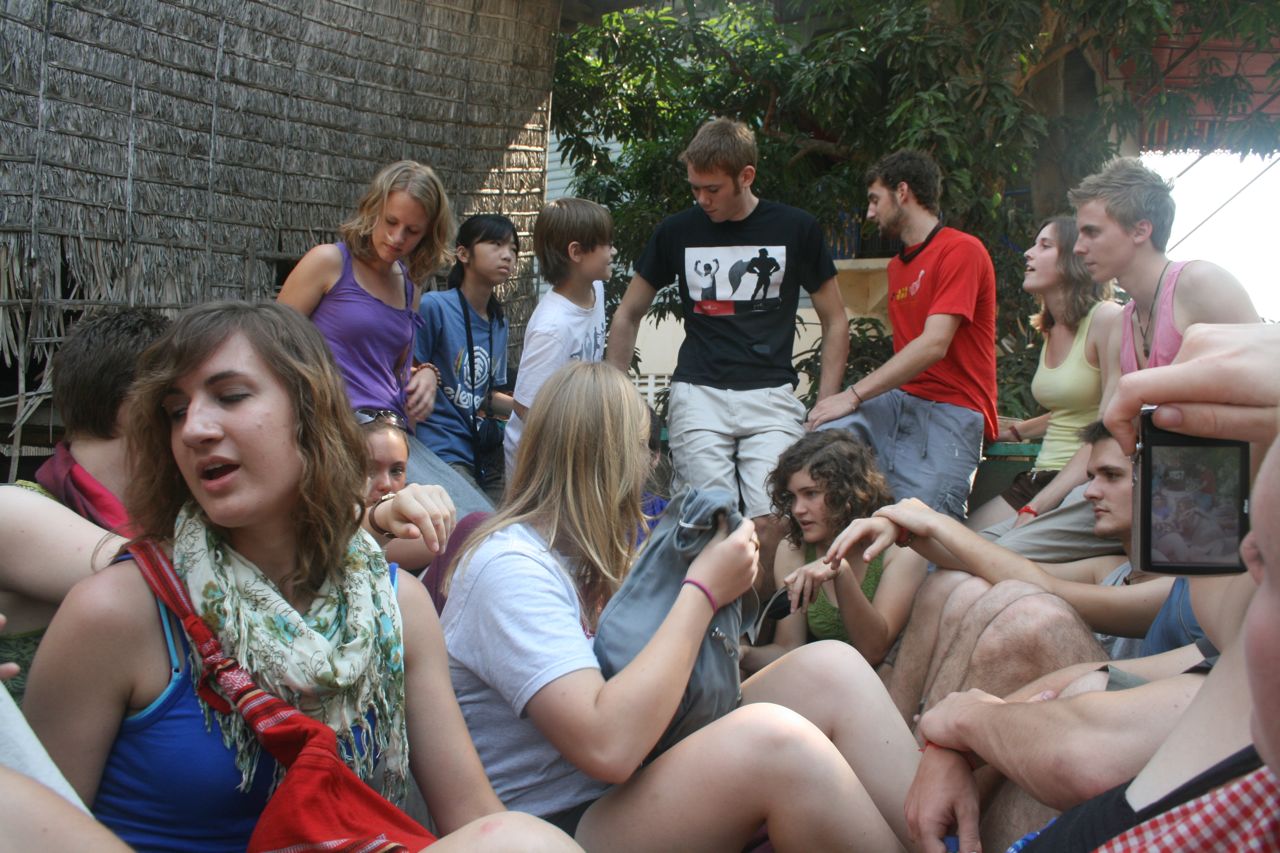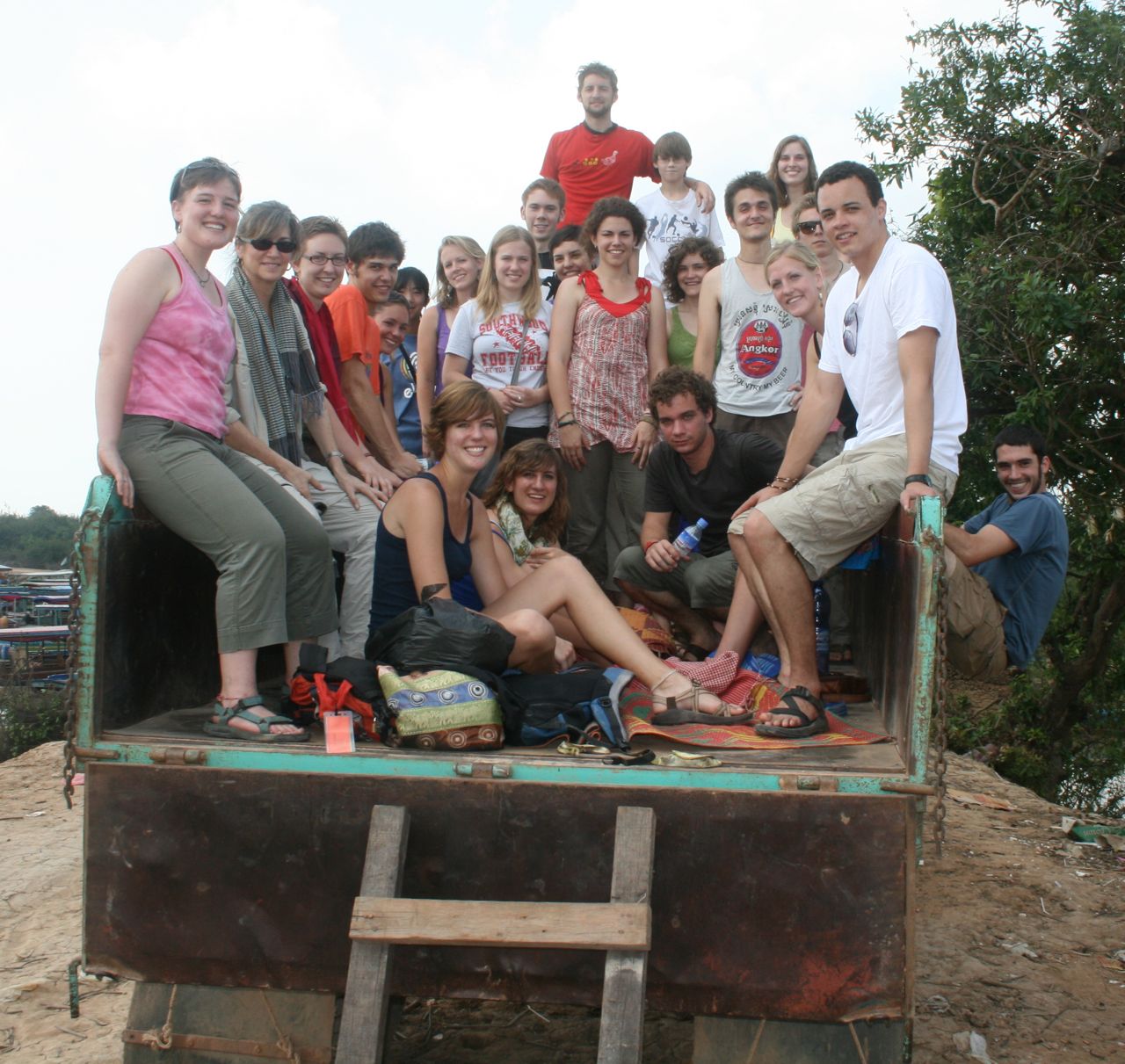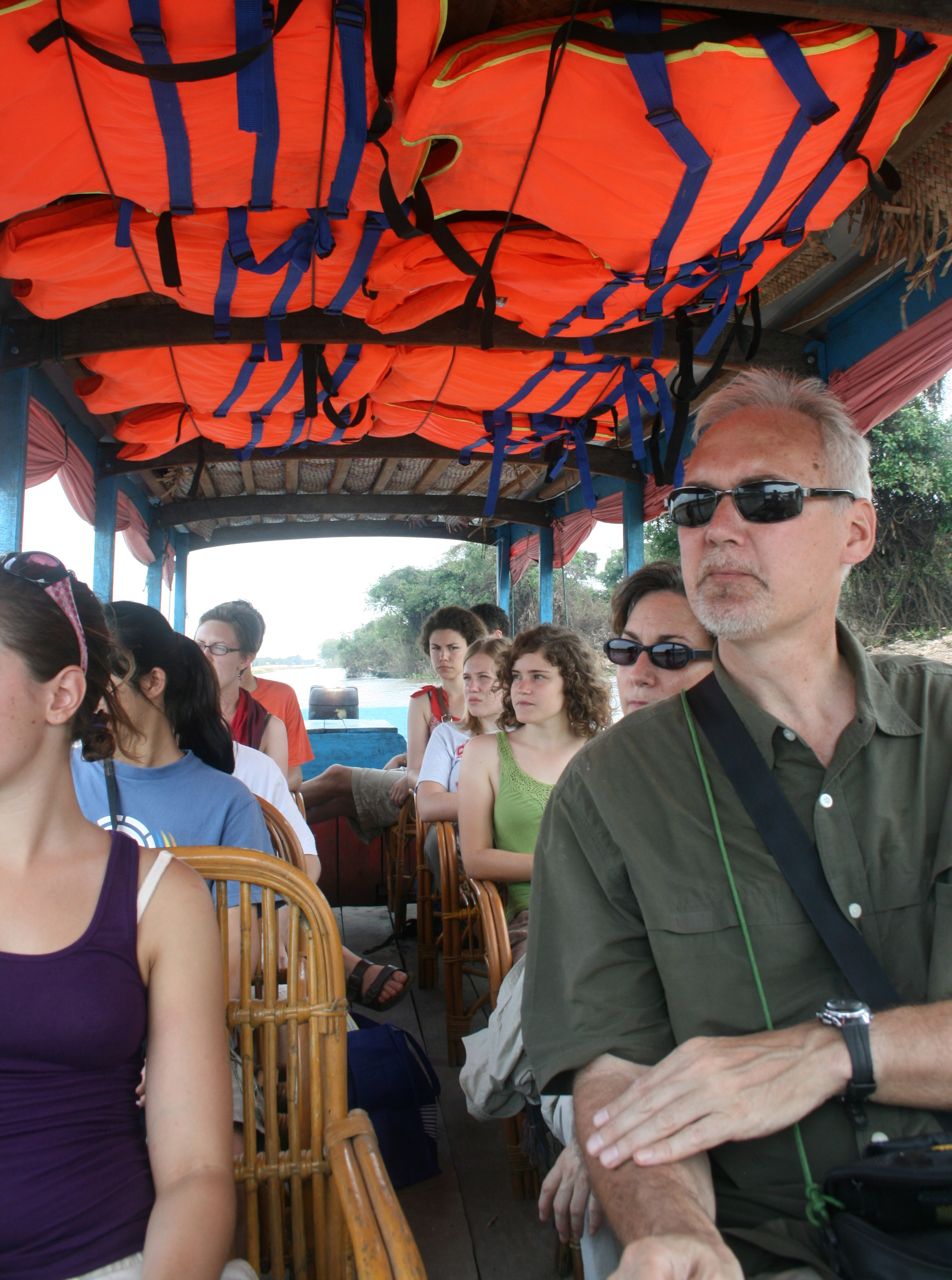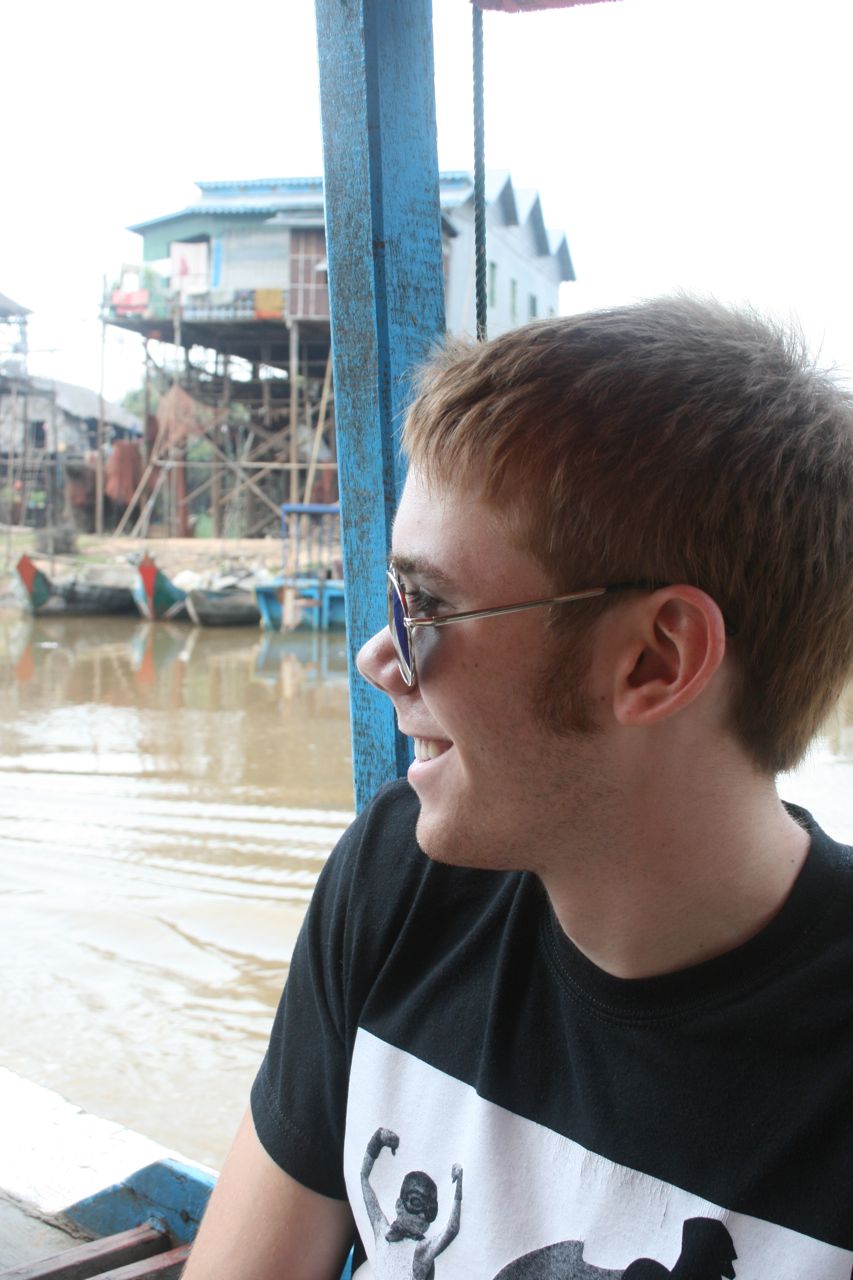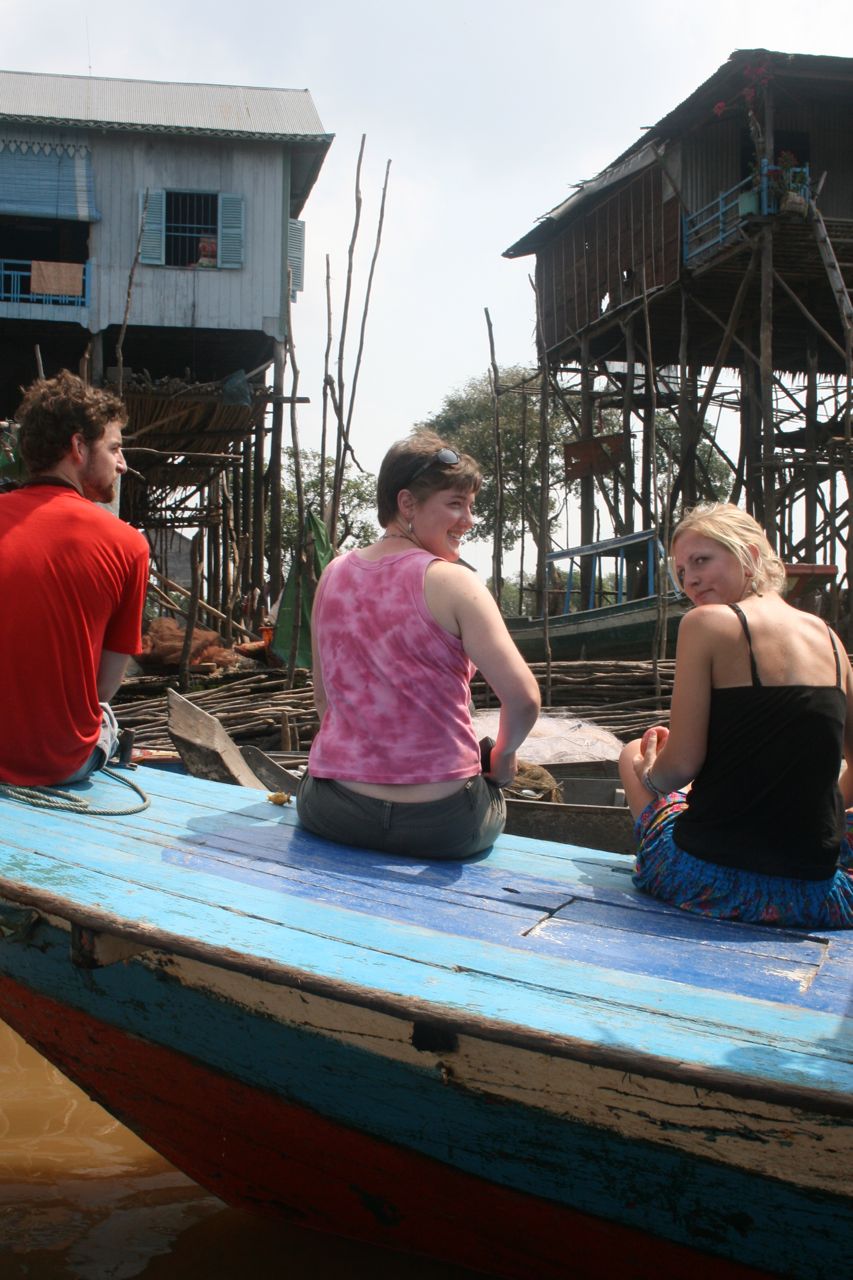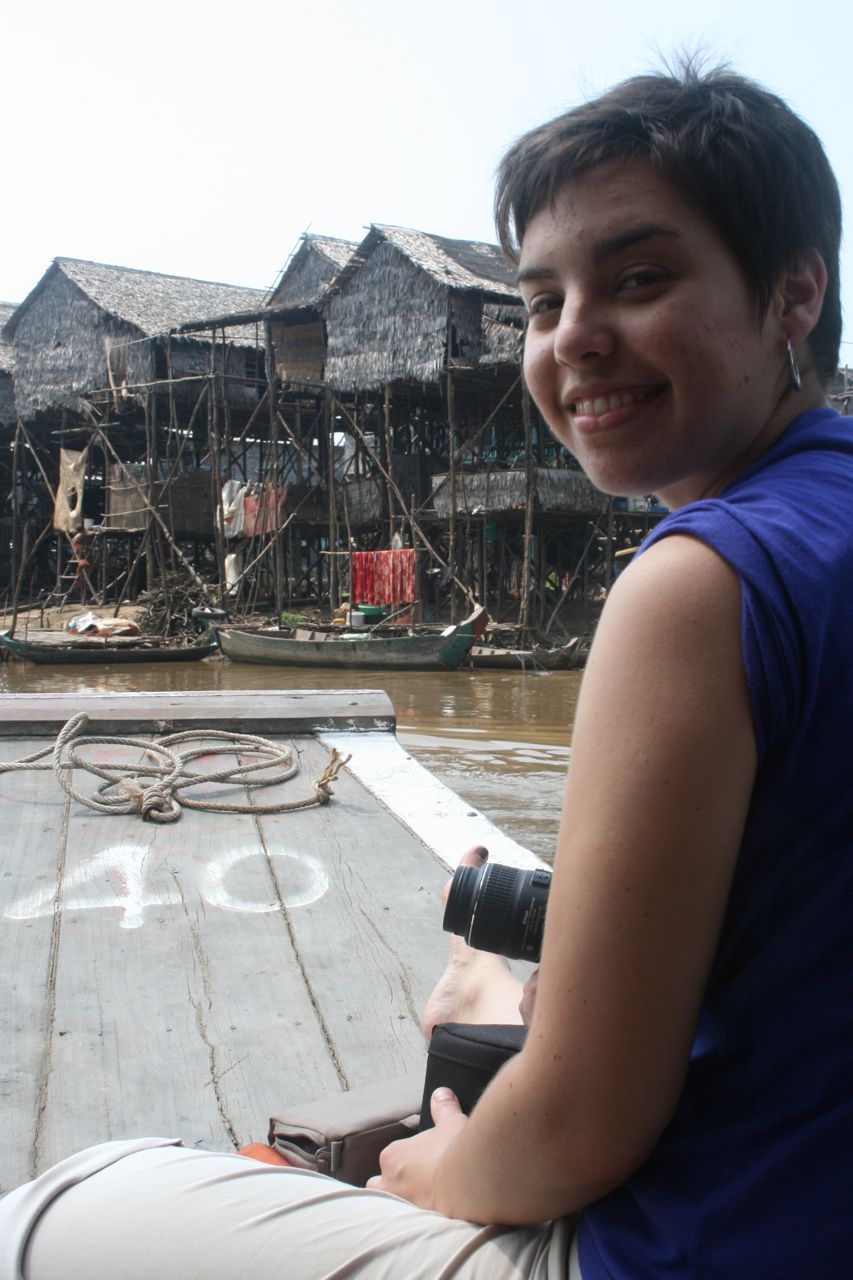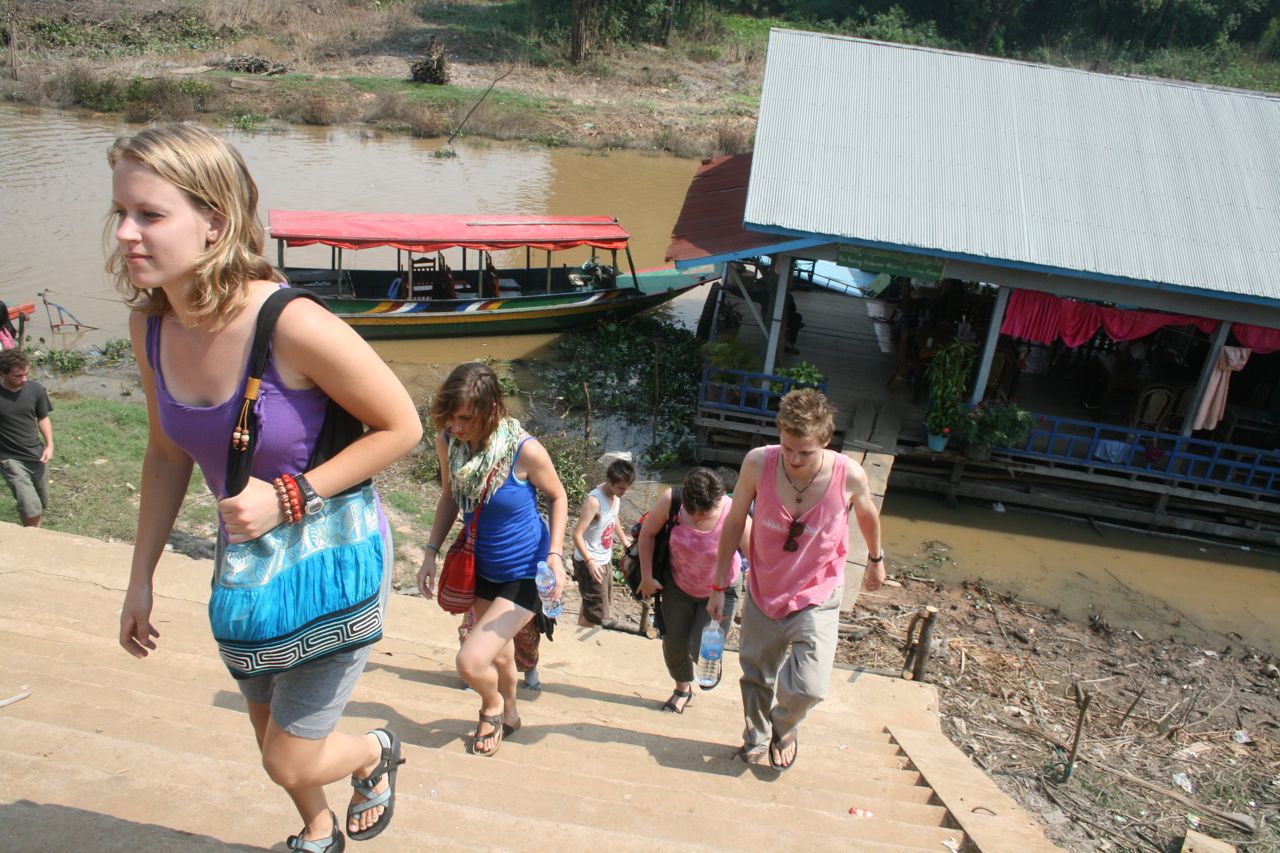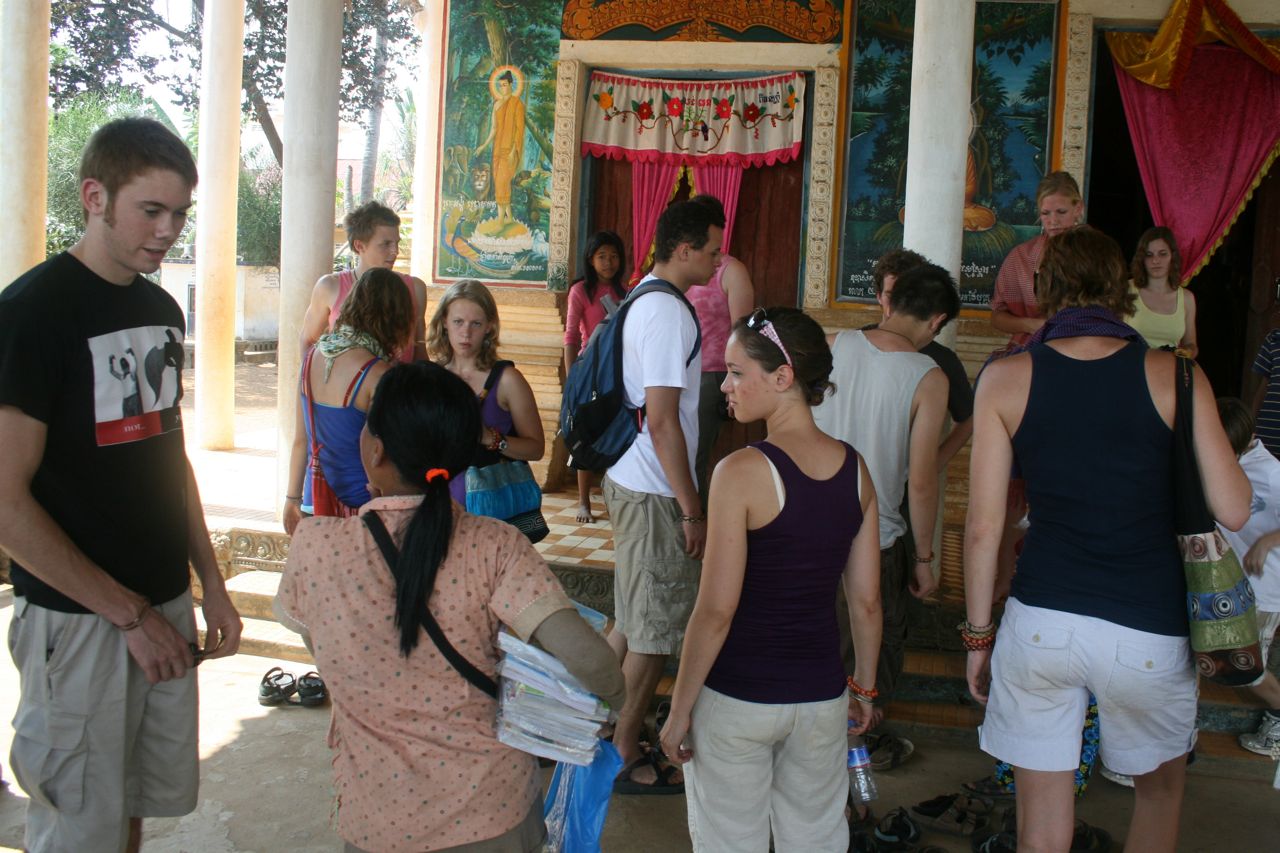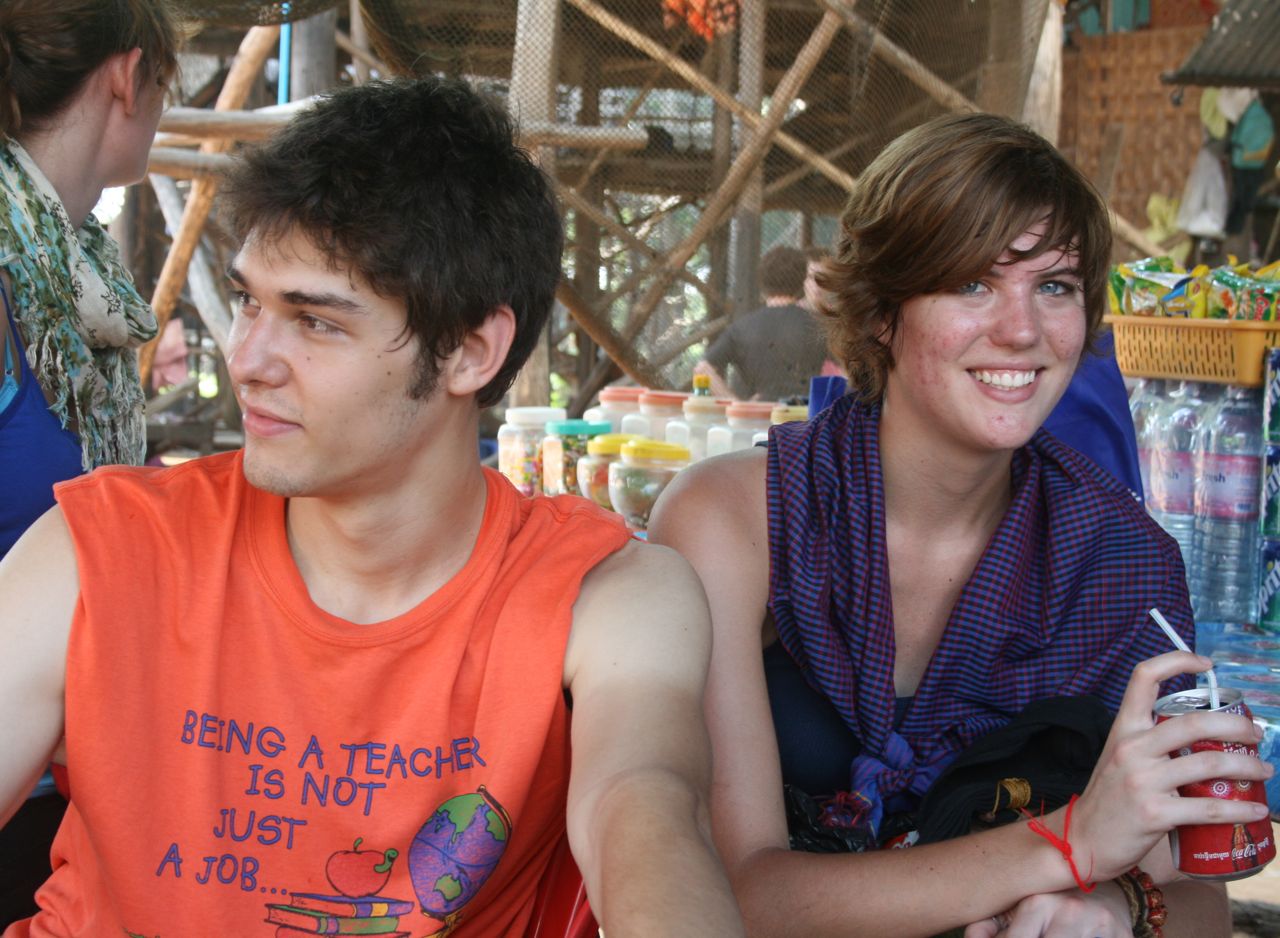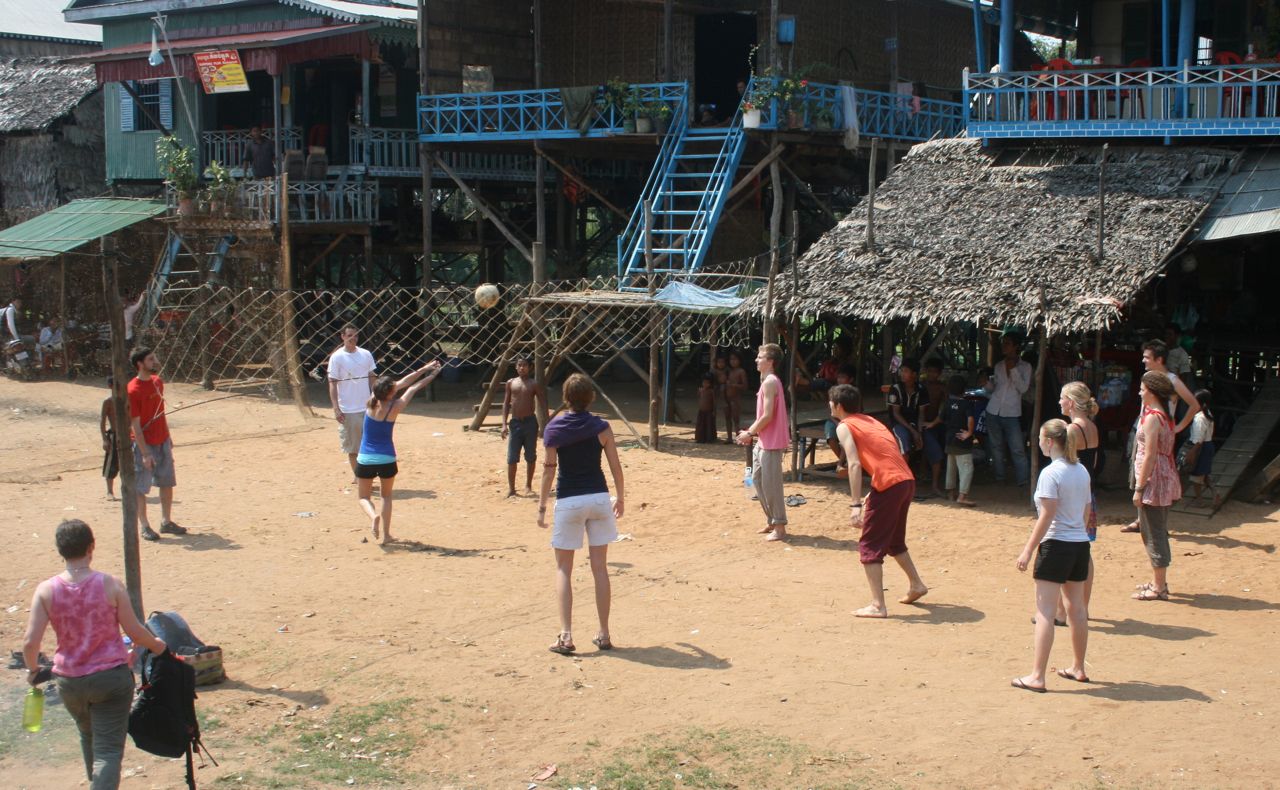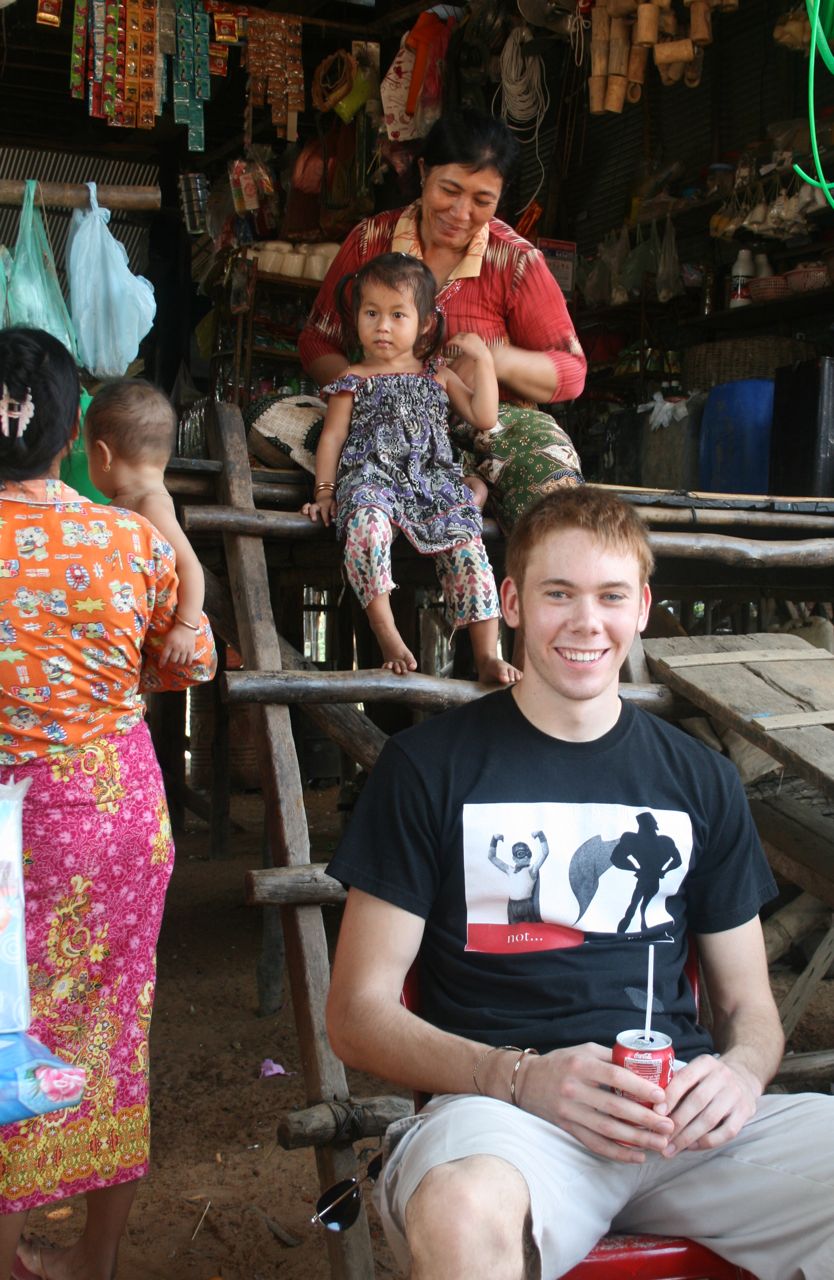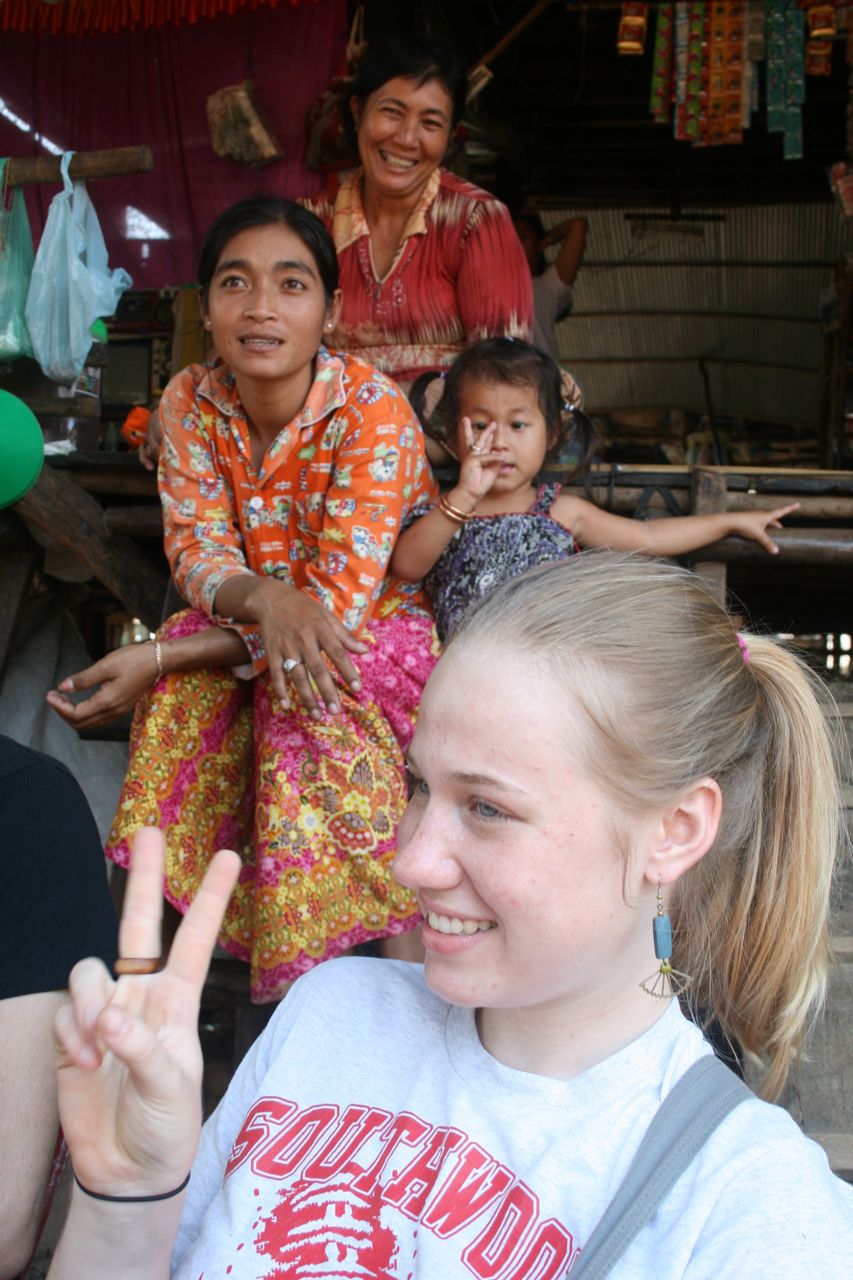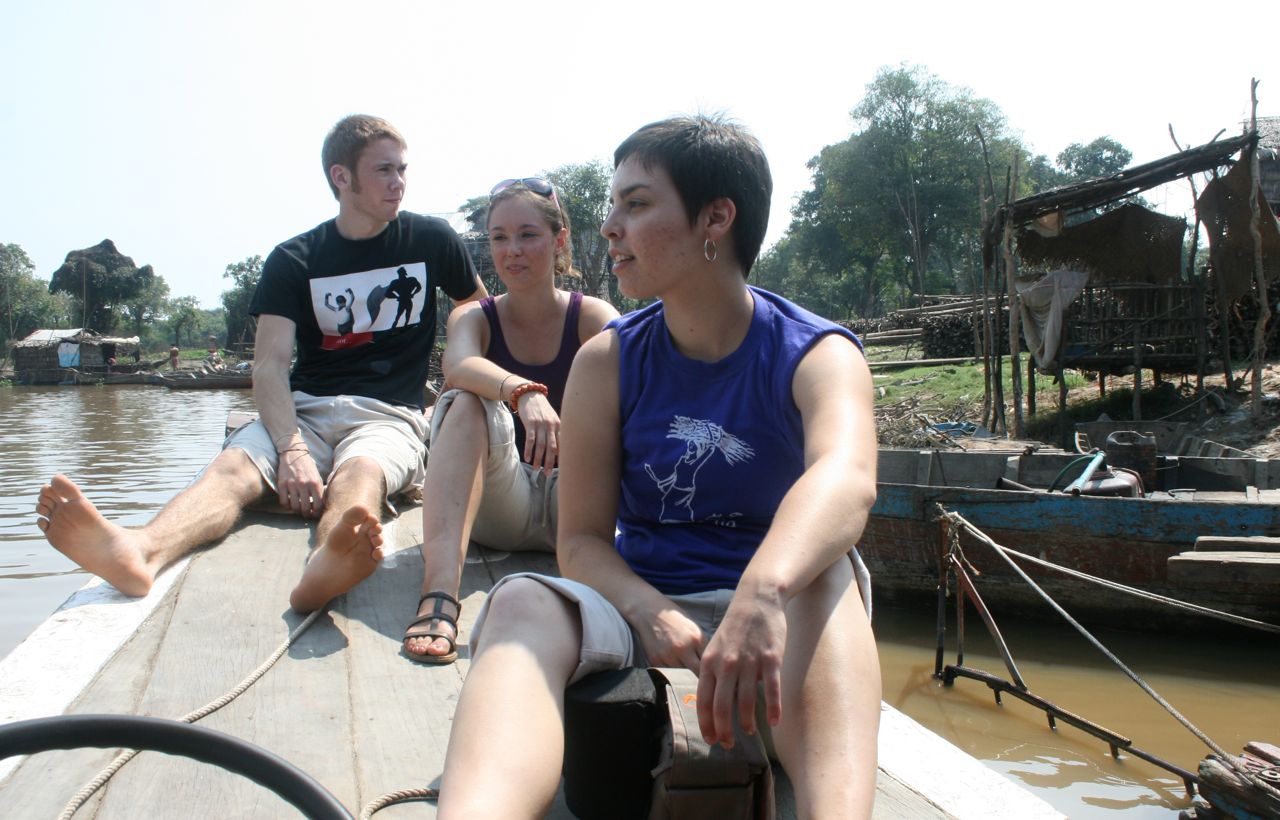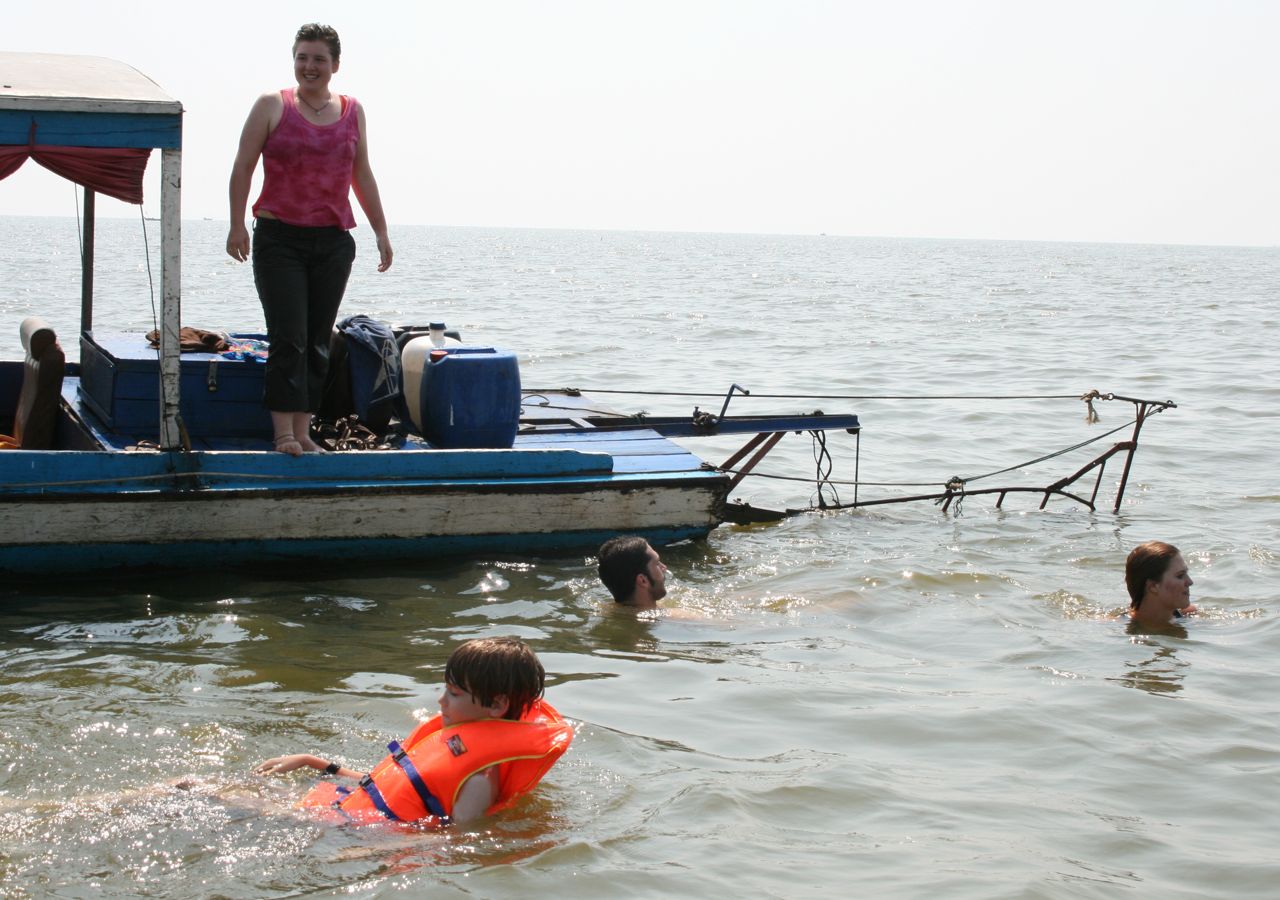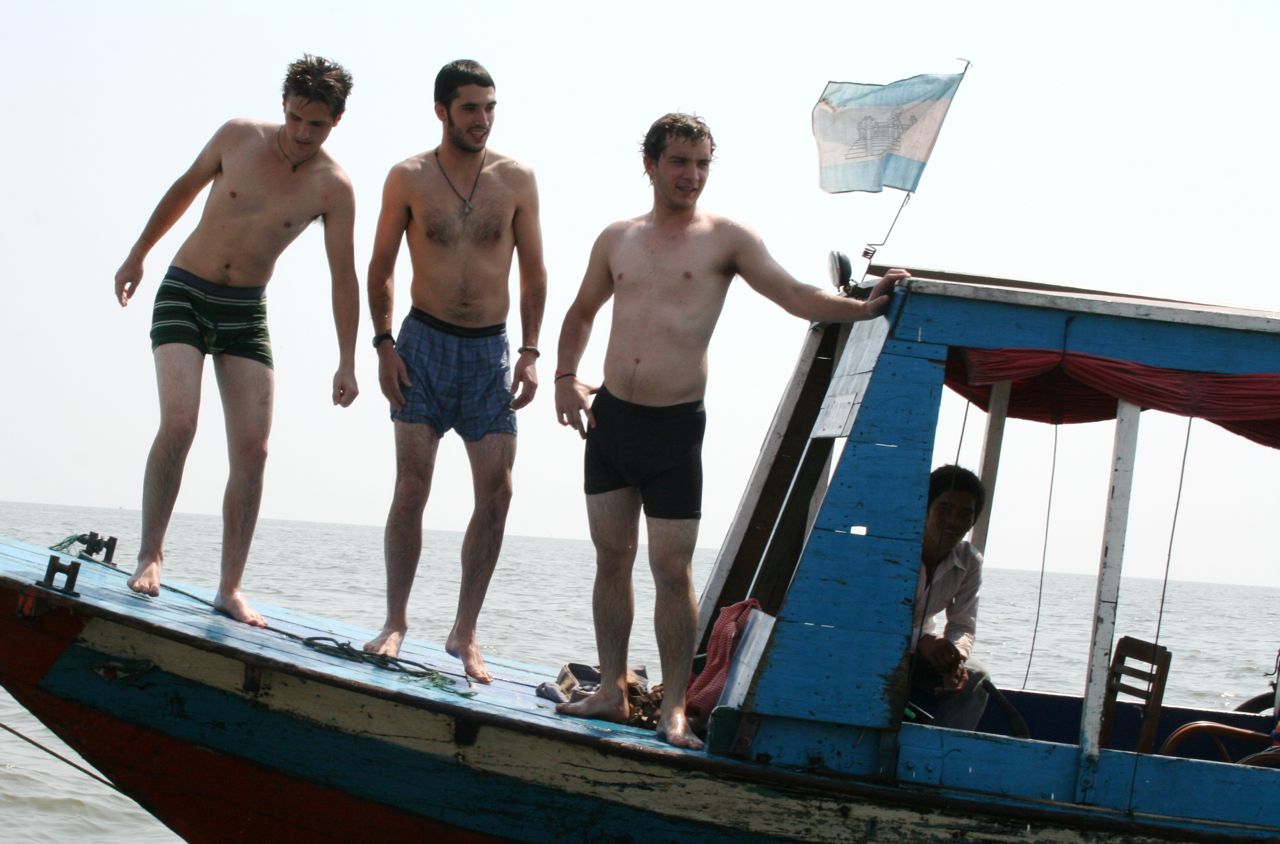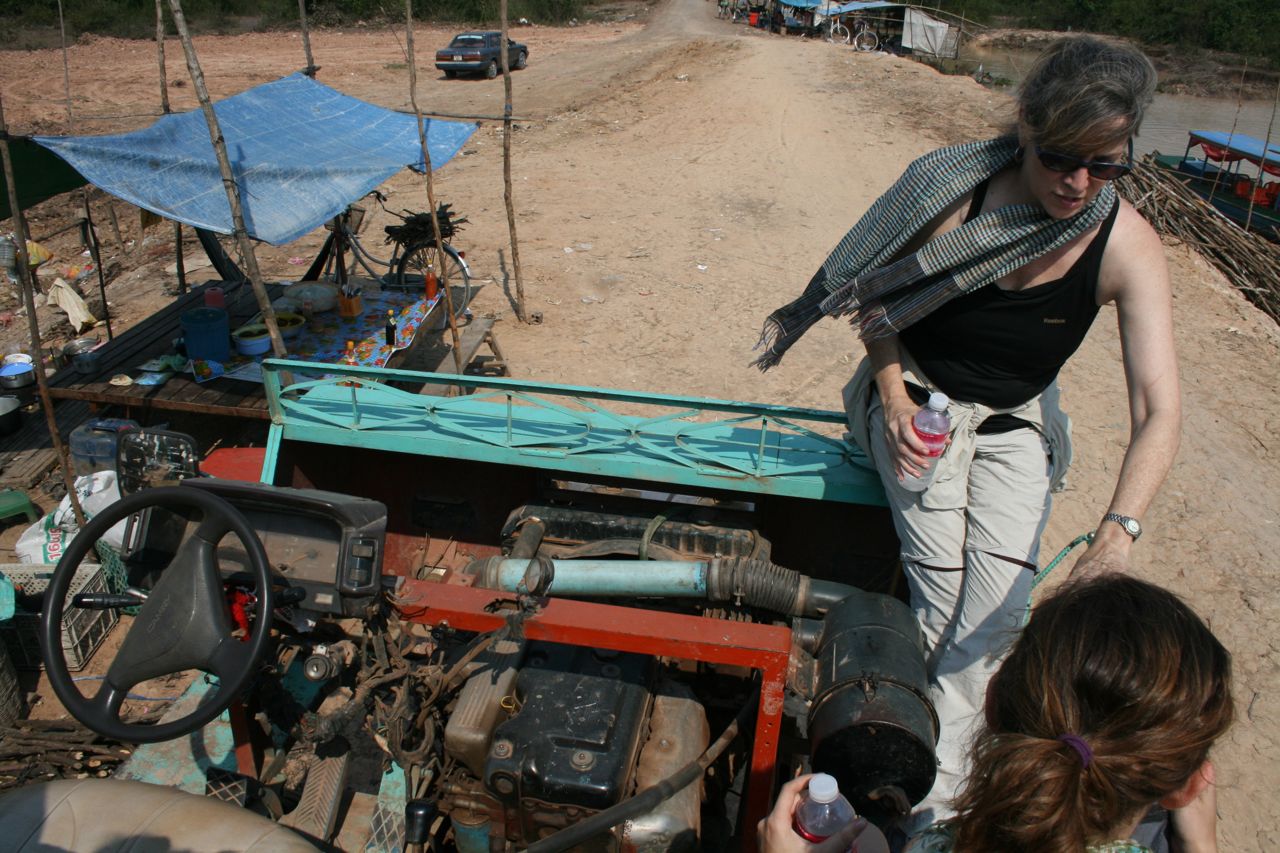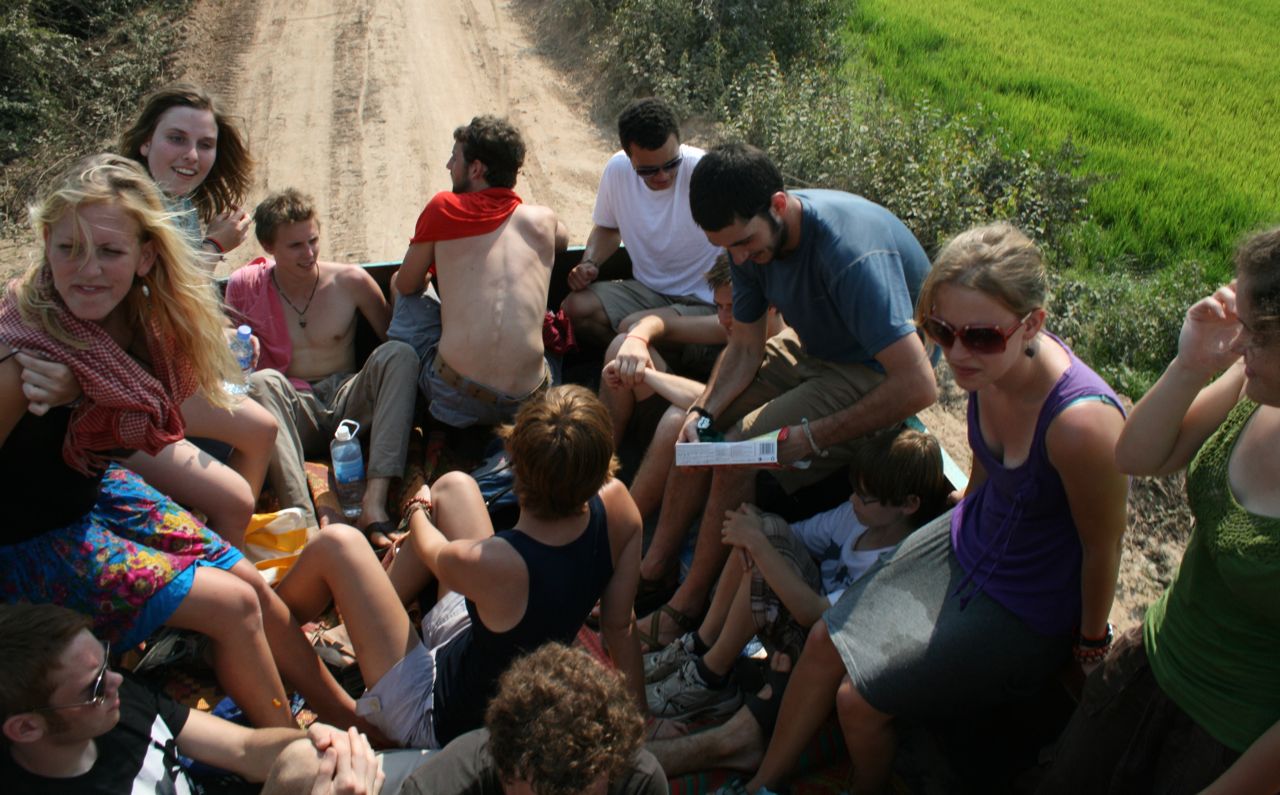Adventure to Kampong Phluck
Among the most memorable parts of the Siem Reap field trip was Saturday’s grand adventure to Kampong Phluck, a village built on 20-foot stilts right along the Tonle Sap. Two students — most likely Julian and Annalisa — will do their service assignments at the village, teaching English and possibly basic computer skills. The village is memorable because of the complexity of getting there, and because of the otherworldliness of the wooden homes rising out of the ground. Several students said the journey to Kampong Phluck rivaled the delights of the Angkor Wat component of the field trip.Because of the yearly expansion/flooding of the Tonle Sap Lake and the flatness of the central part of the country, most provincial Cambodian homes are built on stilts. Usually these stilts are only five to 10 feet high, but in Kampong Phluck they are double or quadruple those figures because of the proximity to the lake.
The Tonle Sap is the largest freshwater lake in Southeast Asia, providing irrigation waters for close to half of the population of Cambodia. From mid-May to early October (the rainy season) the lake swells from 2,500 square kilometers to 13,000 square kilometers or more. Its maximum depth increases from about 2.2 meters to more than 10 meters. This extraordinary process makes the Tonle Sap one of the world’s richest sources of freshwater fish, as flooded forest makes for a fertile spawning ground. Another unique feature related to the annual flooding is that the 100-kilometer Tonle Sap River, which connects the lake to the Mekong River, changes directions — it flows northwest into the Tonle Sap Lake during the rainy season, and then reverses its flow to the southeast as the Mekong begins to fall.
The trip to Kampong Phluck is all about the journey, though the destination is fascinating, too. We first took our large touring bus as far as the dirt road would allow, and then assumed we would need to pick up motos for the next leg of the 90-minute trip. Instead, all 24 of us were hauled into the back of a dilapidated dump truck — with its full engine exposed in the open-air cab. It was a wonderful but bumpy 40-minute ride from our pick-up point, through rice fields as far as the eye could see, to where the truck could travel no further. At that point we picked up two wooden boats with rattan chairs, then moved forward for a half-hour ride to the village.
At Kampong Phluck we visited the local wat, which is related to the school where our students will teach, and then proceeded to walk through the town. We stopped for a half-hour for a pick-up volleyball game with some of the village’s pre-teen boys, who were far better at volleyball than were most of us in the group. We walked past large swaths of cloth covered with drying shrimp, and Charlie lost one of his sandals in several feet of pig poop (the sandal was later retrieved by one of the boys and triumphantly brought back to Charlie).
At the other end of the village we got back on the boats and then headed through the flooded forest. At this time of the year, the lake and river have dropped to low levels, so most of the petrified trees are revealed. We headed on out into the Tonle Sap Lake, and students spontaneously decided to take a dip in the famous waters, which we were assured had no crocodiles (though several students saw a large lizard that spooked them a bit). Ultimately, all of the students plus the two Graber Miller boys went for a refreshing dip. We continue to be impressed with how adventuresome this group is. Curiosity and a willingness to explore make for the best experiential learning.
We’re back in town for five days now, and then we have a weekend trip to Kep and Rabbit Island. During our travel to and from Siem Reap, we solidified most of our service placements, though not all are confirmed and some people may need to shift a bit before these are all solidified. Service will begin two weeks from Friday, so we’re in good shape and already anticipating that second major phase of Cambodia SST.
